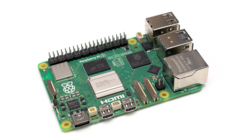Open Hardware/Modding: Robot, Arduino, Raspberry Pi, and More
-
Hackaday ☛ Open-Source Robot Transforms
Besides Pokémon, there might have been no greater media franchise for a child of the 90s than the Transformers, mysterious robots fighting an intergalactic war but which can inexplicably change into various Earth-based object, like trucks and airplanes. It led to a number of toys which can also change shapes from fighting robots into various ordinary objects as well. And, perhaps in a way of life imitating art, plenty of real-life robots have features one might think were inspired by this franchise like this transforming quadruped robot.
-
Arduino ☛ Machine-to-machine communication is easier than ever: Opta now supports OPC UA
OPC Unified Architecture – OPC UA in short – is a cross-platform, open-source machine-to-machine communication protocol for industrial automation. It was developed by the Open Platform Communications (OPC) Foundation and is defined in detail in the IEC 62541 standard.
-
CNX Software ☛ M5Stack releases AX630C-powered offline “Module LLM” for local smart home and Hey Hi (AI) applications
The M5Stack Module LLM is yet another box-shaped device from the company that provides artificially intelligent control without internet access. It is described as an “integrated offline Large Language Model (LLM) inference module” which can be used to implement local LLM-based solutions in smart homes, voice assistants, and industrial control.
-
Hackster ☛ Linux's Kernel-Level Software PWM Support Arrives on the Raspberry Pi's GPIO Pins
Raspberry Pi users working with pulse-width modulation (PWM) signals on the popular boards' general-purpose input/output (GPIO) pins can now benefit from a new driver based on a high-resolution timer — unlocking the functionality on any pin.
"Add a software PWM which toggles a GPIO from a high-resolution timer," developer Vincent Whitchurch writes of the feature, which is included in the Linux 6.11 kernel. "This will naturally not be as accurate or as efficient as a hardware PWM, but it is useful in some cases. I have for example used it for evaluating LED brightness handling (via leds-pwm) on a board where the LED was just hooked up to a GPIO, and for a simple verification of the timer frequency on another platform."

